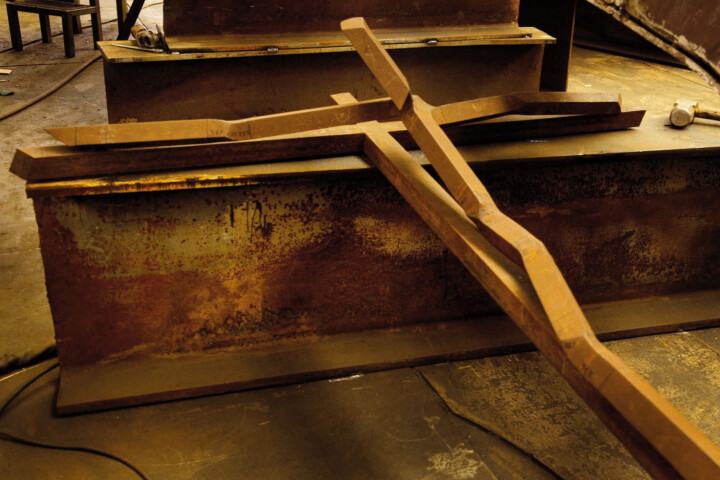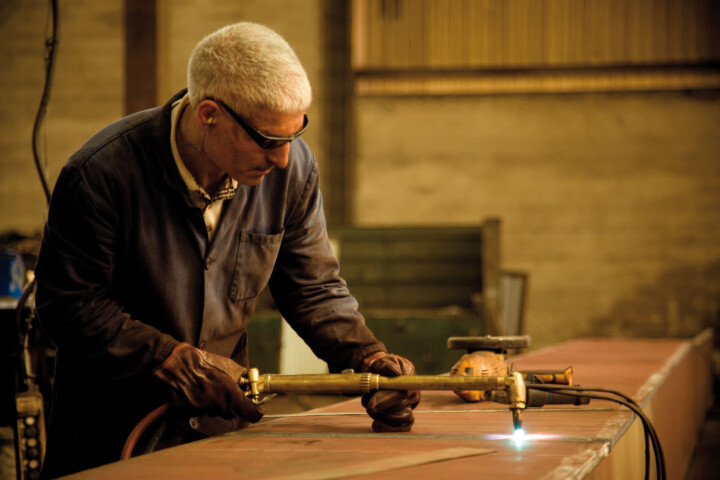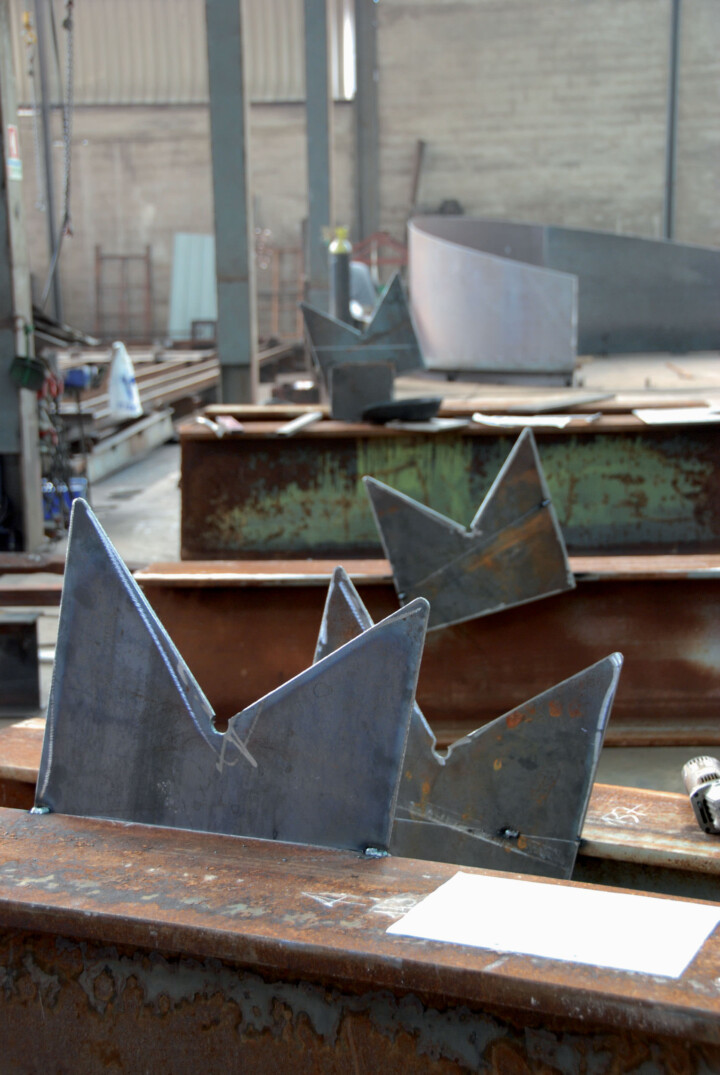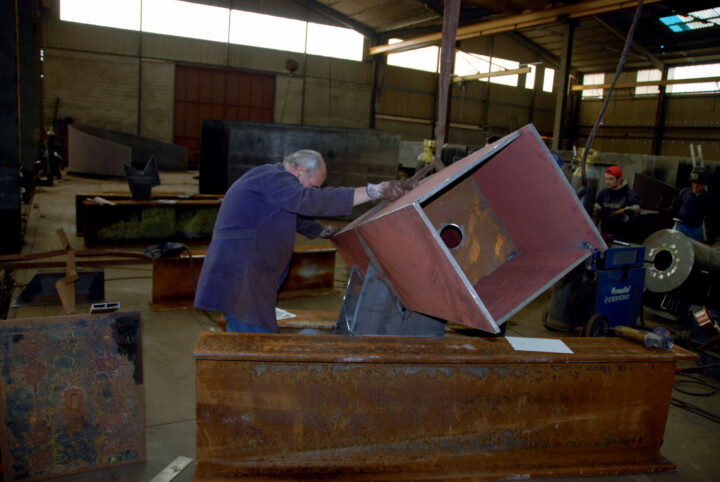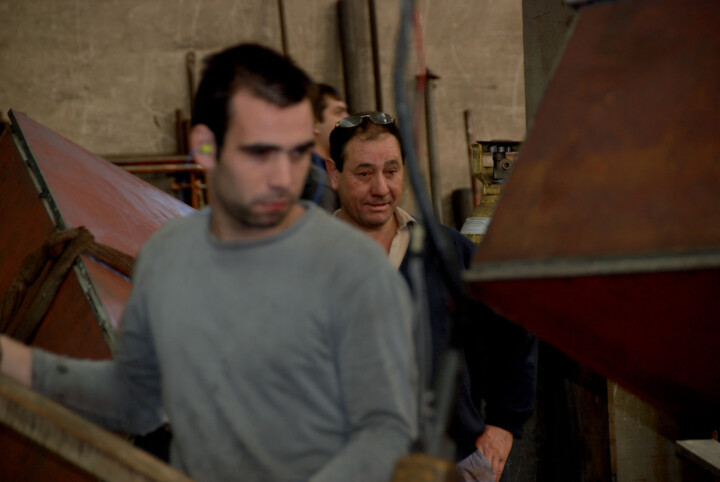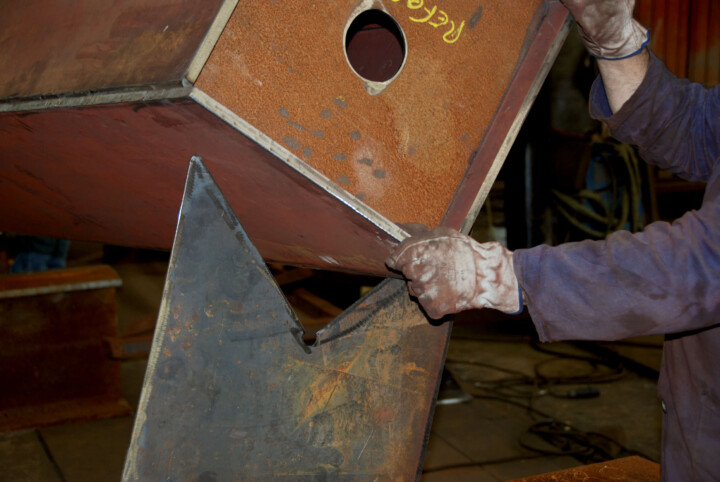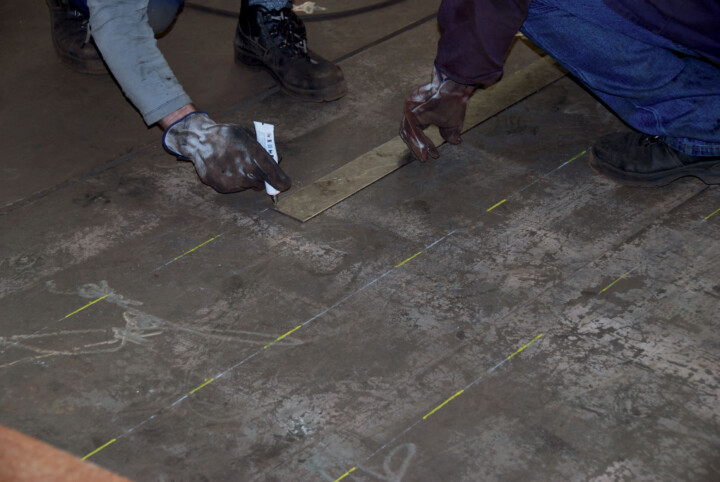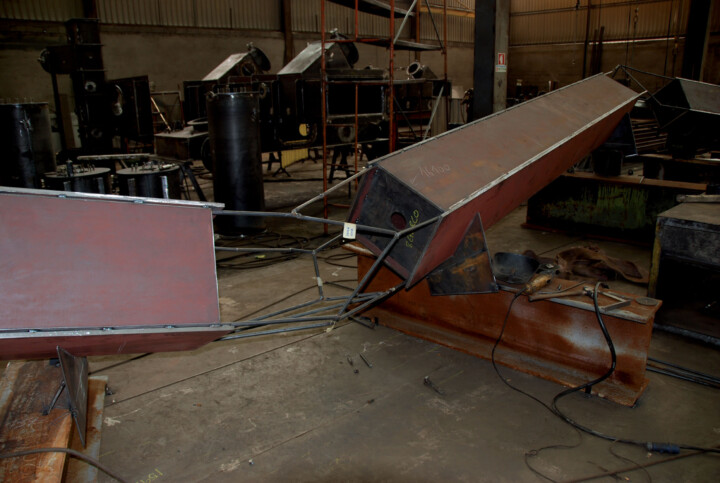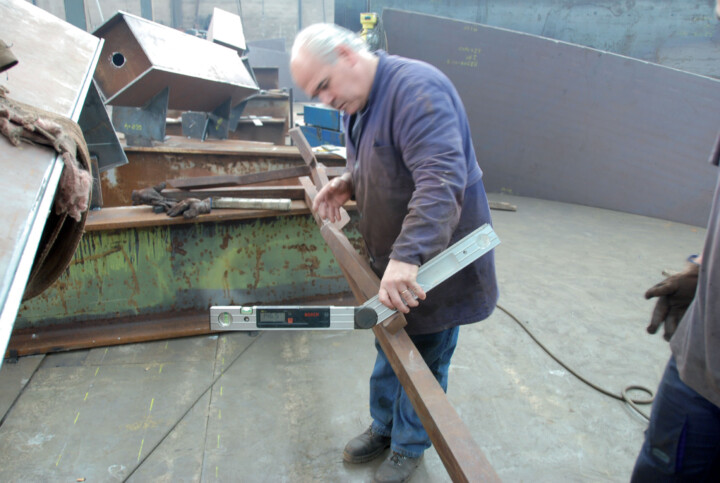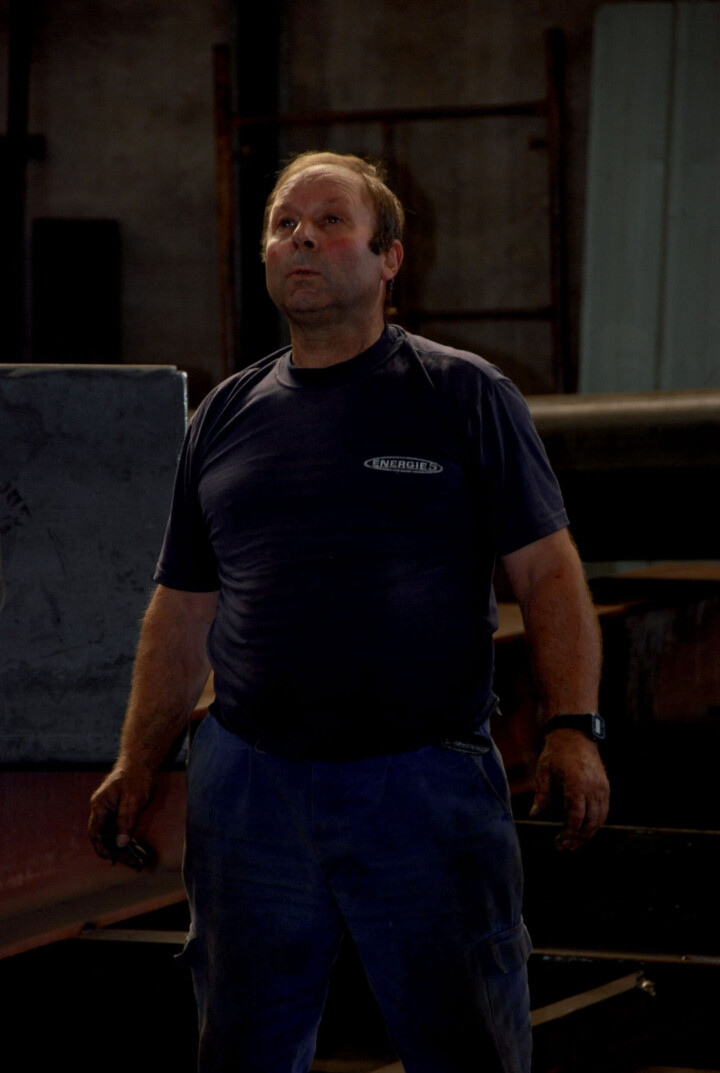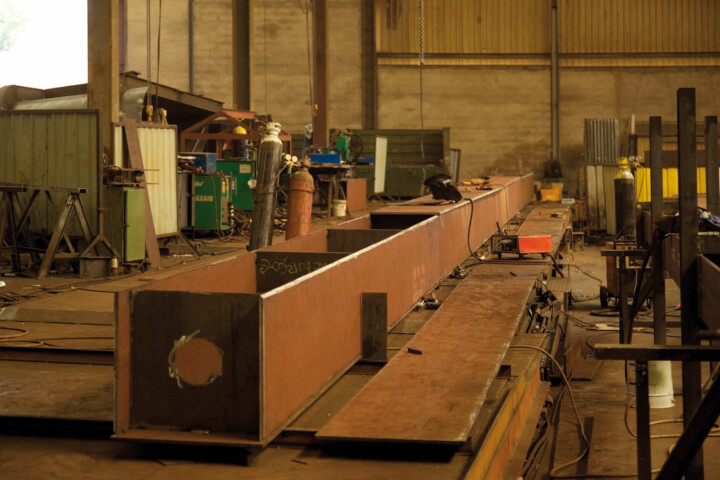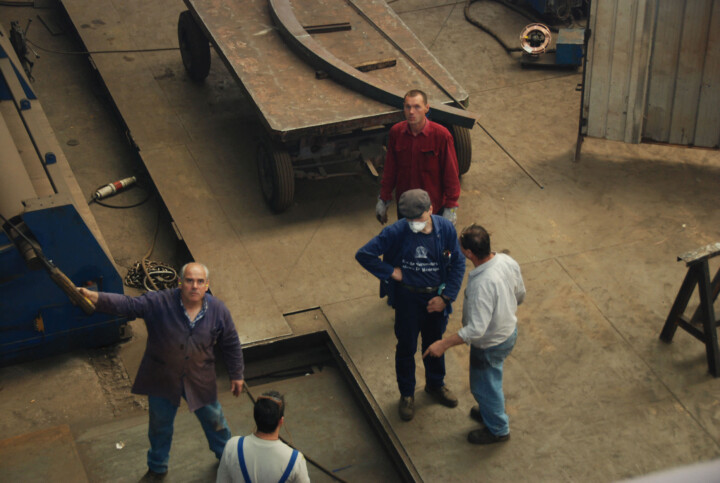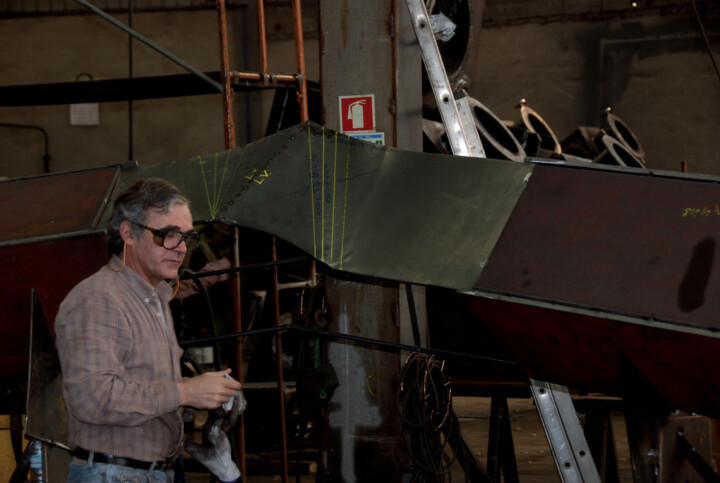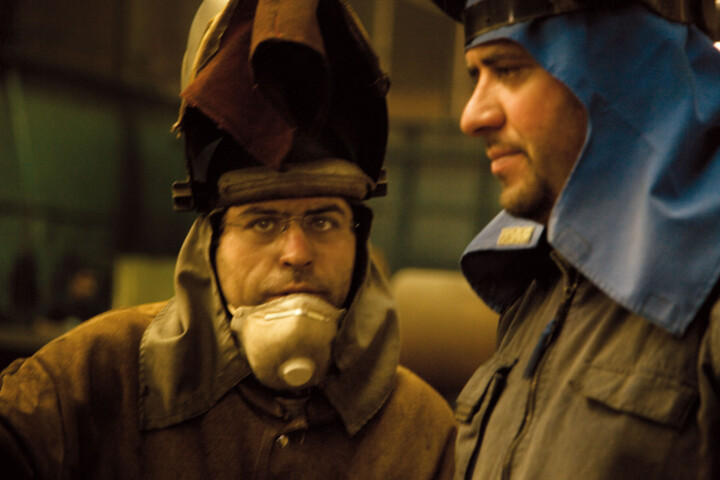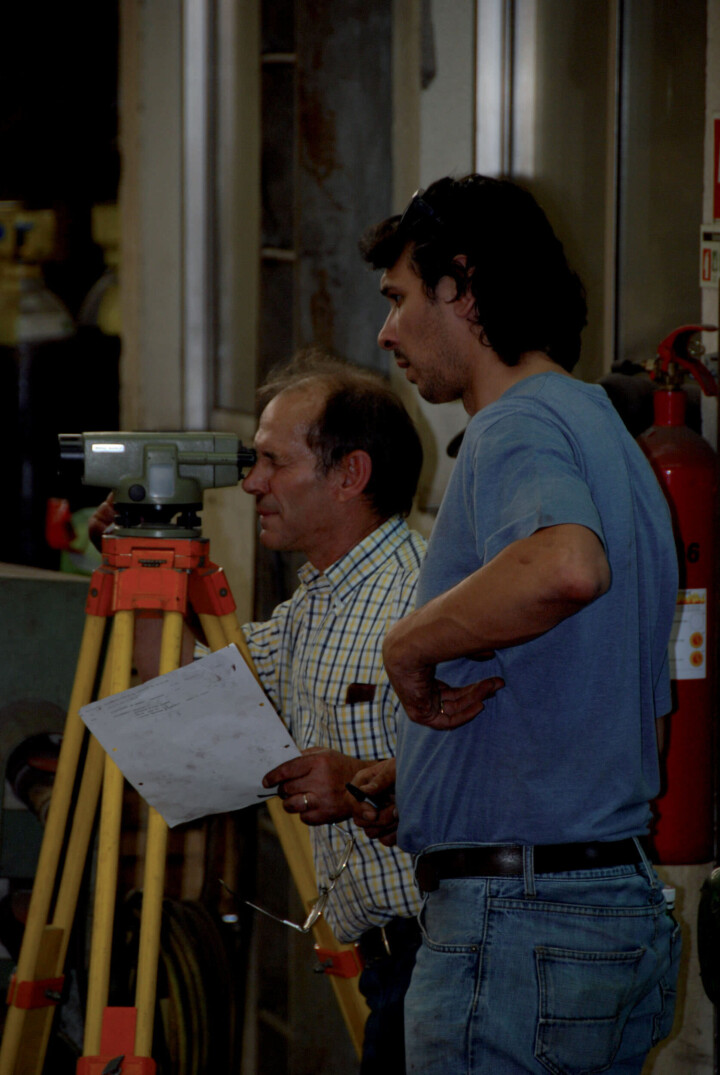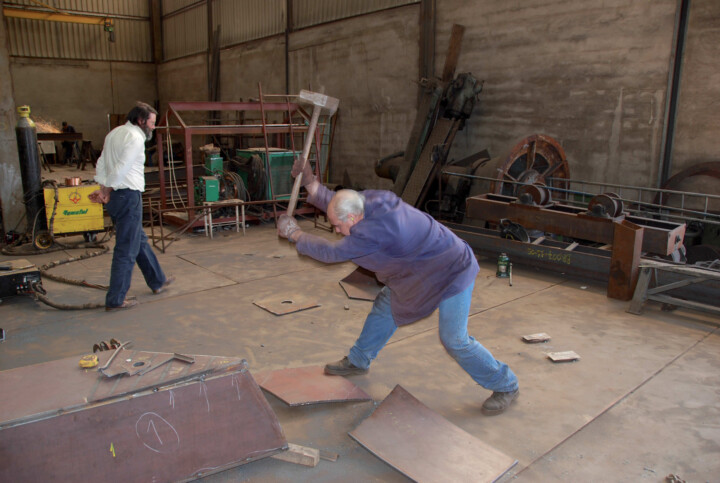Robert Schad and his work in Fátima
Alexandros N. Tombazis
I first came into contact with Robert Schad’s work a few years ago at an exhibition in Paris. I was deeply impressed and regretted not having met him earlier. The thought took shape in me how wonderful it would be to be able to set up a joint project one day. And then, with the Trinity Church in Fátima, the opportunity also presented itself. However, the way was not immediately clear and not everything was under wraps before the start.
I agreed with the rector of the Shrine, Monsignor Luciano Guerra, to draw up a list of artists from several countries (to give the whole thing an ecumenical approach) who would submit proposals. The final decision would then be up to the Santuário.
Initially, it was thought to entrust Robert Schad with a work for the interior of the church, but given the power and monumentality of his work, we came up with the idea of commissioning him for a cross over 30 meters high in front of the new church. It was to overlook the large open space that could hold up to half a million people. The overall layout is characterized by a powerful central axis that leads from the “old” basilica through the center of the new circular building, which is 125 meters in diameter and ends in the pastoral center behind it. In fact, the high cross was originally intended to be placed exactly on the main axis behind the church and to be large enough to still be visible from the square. But when it was finally decided to remove the old cross (about 22 meters high), the decision was also made to place the new cross on the side of the main axis in front of the church. In this position, it gracefully balances the main components of the overall complex, i.e. the large new structure, the central axis, the pre-existing basilica and the small chapel. In addition, its vertical axis counterbalances the horizontal mass of the new building. Thus, the cross powerfully accentuates the new church and does much to make it look more beautiful and self-contained. If it stood alone, without a building in the background, it would have a completely different character and very likely a much weaker effect. I firmly believe that the overall result is much more than the sum of its two parts.
Moreover, the transformation of the cross into a crucifix of the greatest simplicity and abstraction has given it a deeper meaning of extraordinary beauty that can be seen from afar. It is a landmark that I think, in time, will become a symbol of Fátima. The texture and warm brown of the welded square corten steel harmonize perfectly with the subtle beige of the sandstone-faced buildings of Fátima. At sunset, the steel seems to glow, announcing the dawn of a new day.
Thank you, Robert Schad, for your beautiful contribution to Fátima. It was a pleasure working with you.
